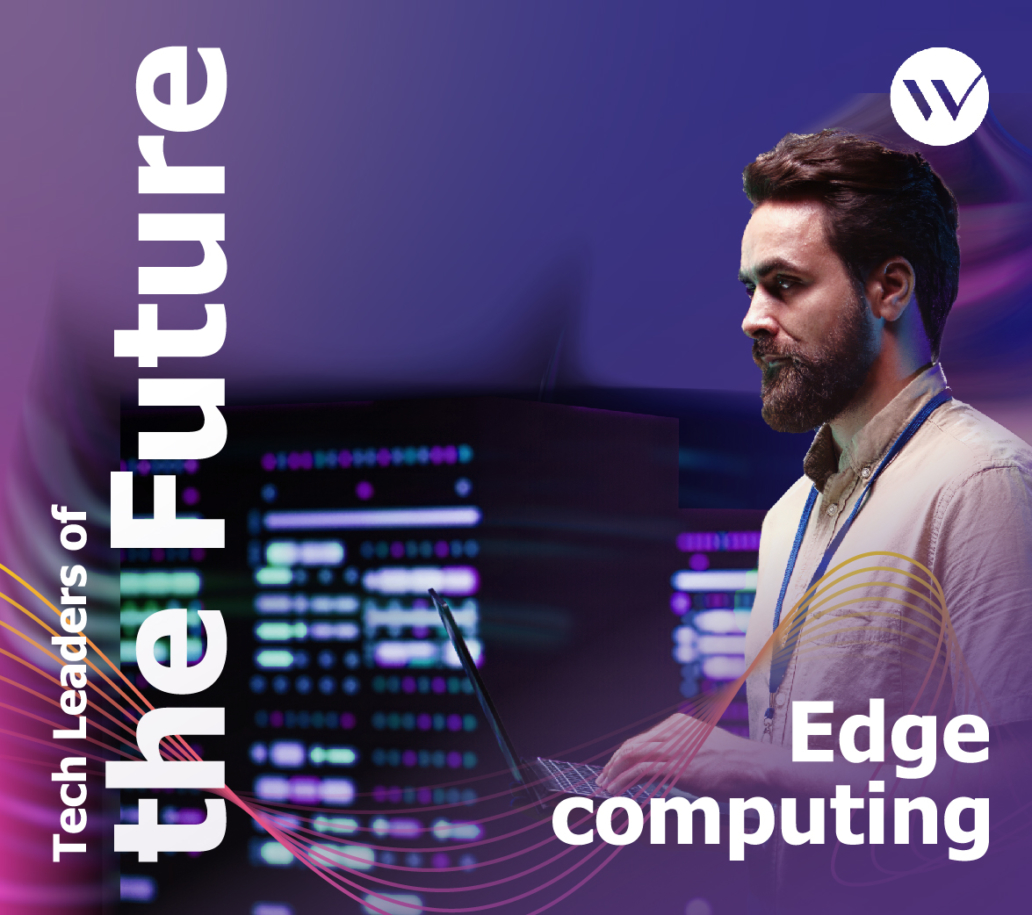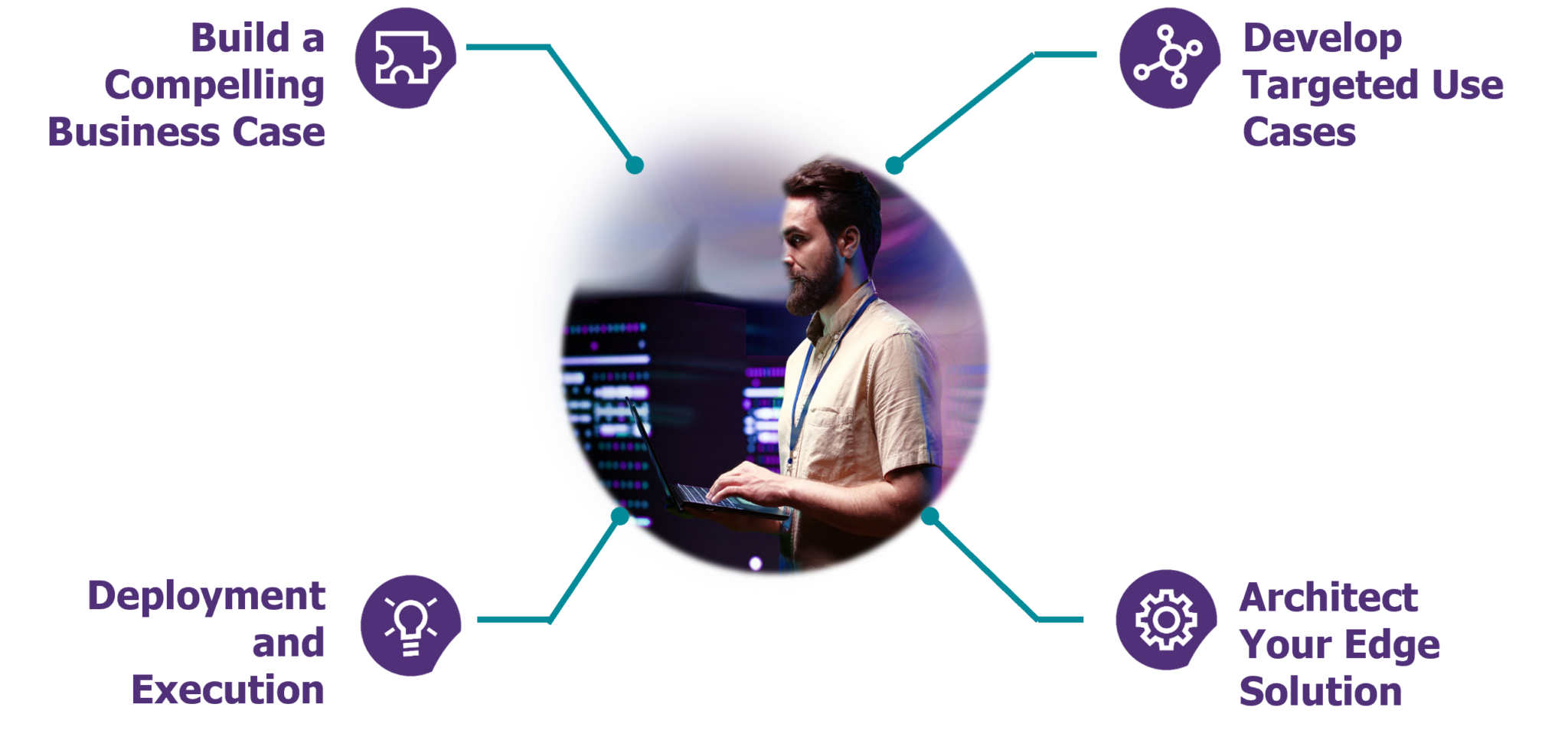The transformative power of technology is more evident than ever, reshaping the landscape of business operations and IT infrastructure. There has never been a time where organisations have had to evolve more quickly to meet expectations.
In the second of our ‘Tech Leaders of the Future series’, we explore the transformative technology, Edge Computing. As CIOs navigate the ever-evolving technology landscape, staying ahead of the curve with innovative solutions is crucial. Edge Computing presents a compelling opportunity to optimise operations, improve efficiency, and deliver a superior user experience. The exponential growth of connected devices is fuelling a revolution at the edge. This technology tackles latency and data overload head-on, paving the way for faster responses and ground-breaking applications across diverse industries.
But how can you leverage the power of edge computing to gain a competitive edge and unlock transformative opportunities?
Let’s start with the scale and growth of this technology. There’s immense potential and rapid growth in the edge-computing market with Forbes estimating a global market value of $317 billion by 2026.
Furthermore, Edge Computing empowers businesses to develop and deploy innovative applications that wouldn’t be possible with traditional cloud-based solutions due to latency constraints. This opens doors for new products, services, and operational improvements across various industries.
Additionally, Edge Computing can enhance data security by keeping sensitive data local and reducing the risks of breaches during transmission to centralised servers. This can be especially beneficial for businesses in industries with strict data privacy regulations. For example, a hospital performing real-time analysis on medical devices can keep patient data at the edge, minimising the attack surface for hackers.
Optimising Operations, Efficiency, and User Experience with Edge Computing
Edge Computing is revolutionising how businesses operate, process data, and deliver experiences. Here’s how key trends are shaping the edge landscape, categorised by their impact on optimising operations, improving efficiency, and delivering a superior user experience.
1. Optimised Operations:
Artificial Intelligence & Machine Learning at the Edge:
Integrating artificial intelligence and machine learning directly into edge devices unlocks real-time data analysis capabilities. This empowers applications like predictive maintenance in factories (reducing downtime as seen by Siemens’ 20% improvement) and anomaly detection in smart grids (as used in Barcelona to optimize energy usage).Gartner’s prediction that 75% of enterprise data will be processed at the edge by 2025 highlights the critical role AI & ML will play in maximizing edge computing’s potential.
2. Improving efficiency:
5G Network Synergy:
The low latency and high bandwidth of 5G networks perfectly complement edge deployments. This synergy enables mission-critical applications like remote surgery and autonomous vehicles, where real-time responsiveness is crucial. To benefit from the low latencies that 5G offers, some use cases will need to position their computation and storage resources closer. 5G: a new generation of technology, but where will the innovation come from?). This underscores the symbiotic relationship between these technologies.
3. IoT Integration:
The vast amount of sensor data generated by the ever-expanding Internet of Things (IoT) ecosystem necessitates efficient management and analysis. Seamless integration between edge platforms and IoT devices is crucial for intelligent automation and optimised data processing. This allows for functionalities like Walmart’s use of edge AI to personalise the shopping experience (resulting in a 5% sales increase).
4. Delivering a Superior User Experience:
Democratisation through Edge-as-a-Service (EaaS):
This pay-as-you-go model removes upfront investment barriers, making edge computing accessible to businesses of all sizes. EaaS fosters wider experimentation and innovation, with the global market expected to reach $84.84 billion by 2030 according to Fortune Business Insights.
By harnessing the power of AI, 5G, and IoT, edge computing paves the way for a future of optimised operations, improved efficiency, and a truly user-centric experience. Similarly, tech giants like Amazon (AWS Outpost), Microsoft (Azure Edge), and Google (Google Cloud Anthos) are already offering edge deployment solutions, highlighting their prominent role in this evolving ecosystem. These solutions connect on-premises deployments with their wider cloud services, providing a comprehensive approach.
Challenges and Considerations: What CIO’s must watch out for
While edge computing offers significant advantages, it also presents challenges that will need to be considered before implementation.
From our experience, we have encountered several pain points when it comes to the deployment of Edge Computing, which must be addressed in advance of implementation:
While GenAI may be grabbing all the headlines recently, platform vendors across all existing service management domains and market segments are aggressively enhancing their AI capabilities to bring value to existing clients; the most mature players aggregating these capabilities into a single strategic enterprise platform to maintain dominance.
- The deployment of multiple edge compute processors increases the likelihood of cyber-attacks, necessitating robust security solutions.
- Cost and scalability should also be considered. Scalability is a concern due to the projected rapid growth of data and processing requirements, requiring a balance between cost-effectiveness and the ability to scale for the future.
- The management and maintenance of edge computing infrastructure add to the overall costs and complexity, especially compared to centralized or cloud services that benefit from economies of scale.
Despite these challenges, industry leaders like IBM and Microsoft are actively developing secure edge computing solutions. Developing robust ROI measurement methods is crucial to assess the long-term viability of edge computing, and strategic implementation can help optimise upfront costs and unlock potential benefits.
The Way Forward: A Strategic Approach to Edge Adoption:
By processing data closer to its source, edge computing empowers organisations to unlock a range of transformative benefits. It offers a powerful solution to the challenges of latency and data overload, paving the way for faster decision-making, real-time insights, and groundbreaking applications across diverse industries.
While GenAI may be grabbing all the headlines recently, platform vendors across all existing service management domains and market segments are aggressively enhancing their AI capabilities to bring value to existing clients; the most mature players aggregating these capabilities into a single strategic enterprise platform to maintain dominance.
To fully leverage the power of edge computing, CIO’s must adopt this strategic approach:
Identify specific areas within your organisation’s near-term and mid-term business plans where edge computing can deliver significant benefits. Focus on high-impact opportunities that can be addressed with edge solutions.
Design a technical solution considering data volume, processing requirements, and future growth. A report by Gartner emphasises the importance of leaders building and communicating enterprise standards, best practices, and skill sets to streamline adoption.
Quantify the benefits, costs, timelines, resource requirements, and risks associated with your edge computing initiative. This helps to demonstrate the clear value proposition of your investment and secure stakeholder buy-in.
Start small, iterate, and prove the business case before scaling up. As Gartner also recommends, to ensure the success of edge computing projects, lessons should be captured by closely managing deployments from Proof of Concept (POC) through production.
IT leaders should explore how edge computing can empower their business by identifying opportunities, assessing challenges, and embracing a strategic approach to unlock its full potential.





